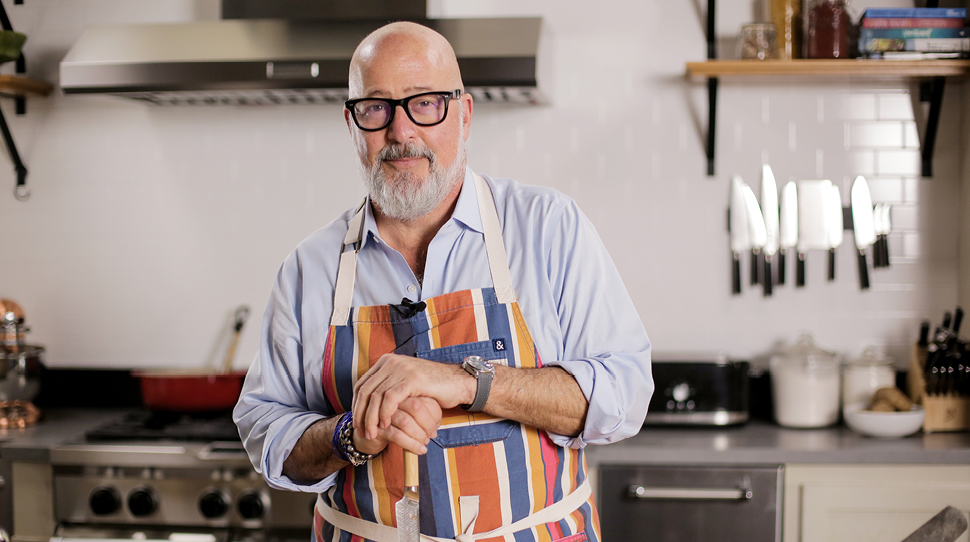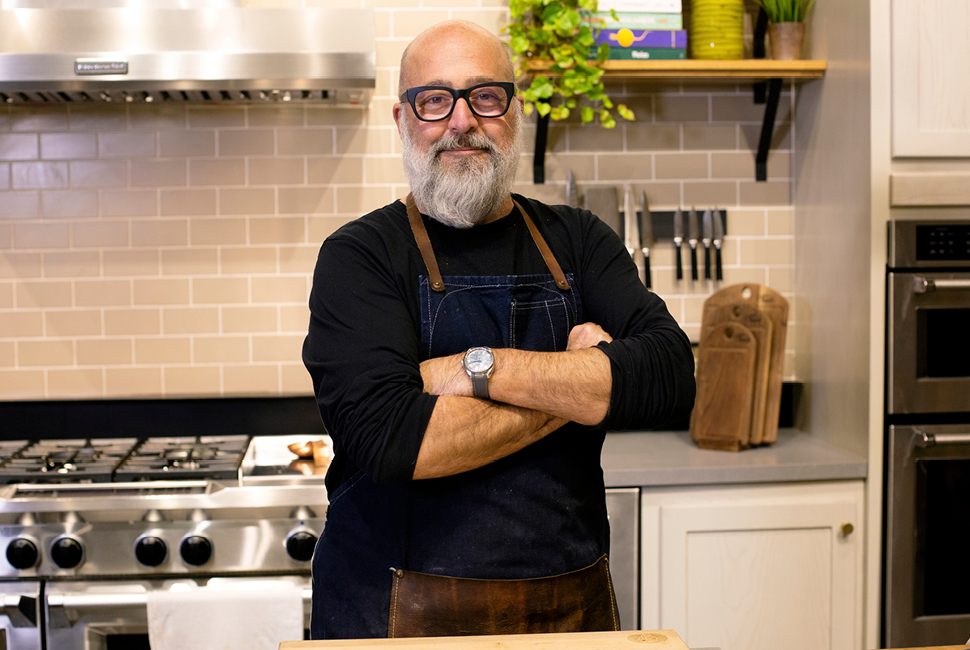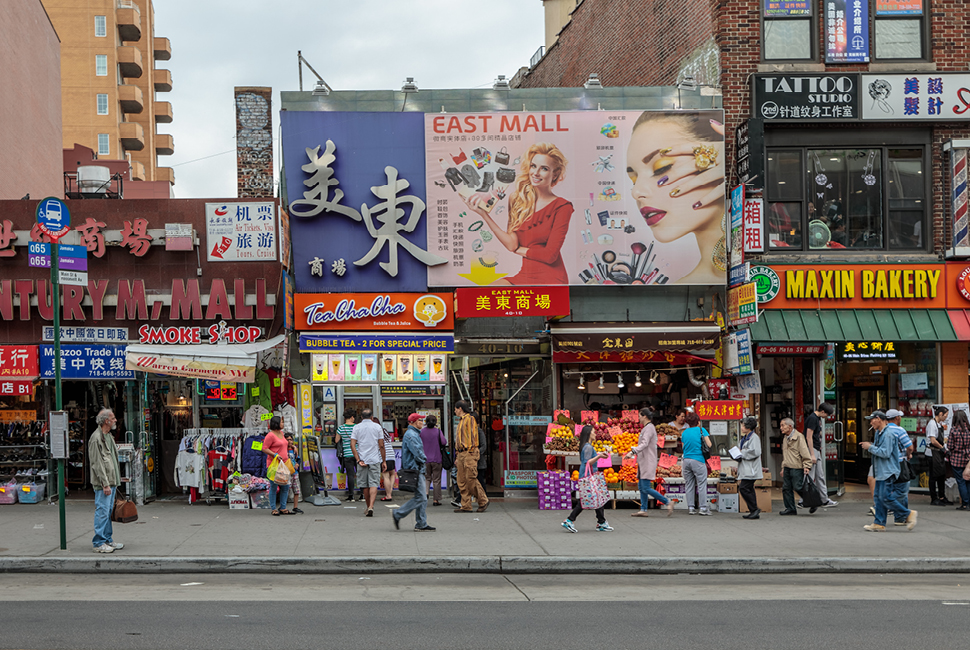

As the host of popular TV shows ranging from Bizarre Foods to Magnolia Network’s Family Dinner, Andrew Zimmern has traveled and eaten his way across the globe.
His programs have garnered a strong following because the Emmy- and James Beard Award-winning television personality and chef isn’t your typical cookie-cutter host.
“My show, Tony [Bourdain’s] shows, when he was alive, are more resonant with people than a lot of other travel shows because we actually lived our brands long before we had a camera crew following us along.”
We caught up with the passionate, friendly Zimmern as he prepared to head to Upstate New York for the second annual Catskill Cuisine festival May 10 to 12. He shared the most unusual food he’s tasted, his comfort food staples and his unexpected favorite food city.
You will host several demonstrations at Catskill Cuisine. What is Catskill cuisine?
It started in the Borscht Belt days as a summertime destination for folks — especially associated with Jewish communities in New England, and especially in New York —traveling up to a place that they knew could supply food they were familiar with. And in many cases, it was kosher food.
It’s fascinating to me, as a culture geek, how something that is remembered as one thing can have a series of hinge events that turn it into something even more fabulous.
The Catskill Cuisine festival is in Bethel. It’s right around the corner from Max Yasgur’s farm, where Woodstock was, which is phenomenal. Since then, obviously, golf courses, casinos, music festivals and so much more have taken place there and expanded so that people from all over the country go there during the summertime.

I went to college in another part of New York, the mid-Hudson Valley, and I was always stunned at how many people wanted to run to the beach during the summer. Running to the river, lakes and waterfalls are just as beautiful, and I think people discovered that, and a lot of homes were very cheap. A lot of large tracts of land were available as farmers weren’t able to make ends meet, and people were able to build event centers and things like that. And today, Bethel Woods Center for the Arts is just a huge playpen of awesome. It just shows how far that part of New York has come — it’s no longer restricted to just the bagel-and-schmear crowd.
The more people that go to a place, the more the food scene erupts. That part of New York has such a rich history of agriculture and a prodigious output of dairy, vegetables, fruit and animals raised for meat. Then you have all the restaurant people showing up. And now there are fantastic restaurants all around that area, and it’s become a destination for a lot of people to go to 12 months a year. I think that’s kind of cool as a lifelong New Yorker.
Are there any particular restaurants that you enjoy in the region?
[In Accord,] Harana Market is really great. It has got Filipino food. If you’re looking for group-friendly food, Harana Market is fantastic. I love it. There’s a place called Westwind Orchard — it is actually an orchard. They have a farmstand, big yard with picnic tables and wood-burning pizza oven, and they do it VPN style [Neapolitan pies certified by Italy’s Associazione Verace Pizza Napoletana], which is great.
The Brushland Eating House is probably the most famous place in that part of the world. It’s in Bovina, which is on the western side of the Catskills. It’s a prix fixe kind of place.
If you like a brewery, like a wonderful hamburger with a big outdoor space, there’s a place called Subversive.
In Catskill itself, there’s a place called Hemlock that I really liked. And in the town of Hunter, at the base of Hunter Mountain — where there’s great skiing, by the way — a restaurant called Fellow has an incredible view and great food, like a BLT with locally made bacon. Hunter also has a place called The Prospect, which I liked.

You’re known as one of the world’s most adventurous eaters from your show Bizarre Foods. What are some of the most memorable bizarre foods that you’ve tried?
I think the most memorable ones, just by definition, have to be the “Dr. Seuss foods” that I’ve eaten. Those are foods that no amount of research that we did, which was voluminous, ever led us to believe that there was a floating coral worm off the coast of Samoa that only rises to the surface once a decade when atmospheric conditions are right.
Local tribal people scoop it off the surface of the ocean and eat it. It looks like a bright blue blob of Vaseline, but it’s millions of little tiny worms. They cook it, they eat it raw.
You’re in those huge trenches where the ocean is thousands and thousands of feet deep. There’s these huge swells, but once every 10 years that water goes flat. It’s rare and completely windless. The coral knows that that’s coming, and so it releases this worm. The worm goes up, dies on the surface of the water, falls back down to the coral bed in the form of marine snow and it feeds the coral. It provides enough nutrients for the next 10 years of growth for the plants. There’s very little food for the coral life that far down, so it sort of houses a worm in a symbiotic relationship. You can imagine how the indigenous people reacted to that and because of its color, it looks like a gift from the ocean gods.
It just blew my mind. I knew I was going to eat a giant scallop the size of the tire in Samoa. I knew that I was going to eat a fermented fish sauce made with the guts of a sea cucumber, which basically rots in a bottle until the good bacteria eats the bad bacteria, so it won’t get you sick — they use it as a condiment on foods, much like the Vietnamese and Thai consume fish sauce or the Italians consume a colatura. We did not know that this coral worm was there, and yet it was the highlight of the trip for me.
When you crave comfort food, what do you turn to?
My grandmother’s roast chicken with her pan gravy. It’s the one I grew up on.
It’s Chinese food, which was eaten twice a week in my house. Growing up in New York in the ’60s, every Sunday night we had our family dinner at King Dragon, a Chinese restaurant on 74th and Third Avenue.
What does a family dinner look like to you today?
Family dinner today looks more like something that you would eat in Turkey, Iraq or a lot of other countries in the Levant. I will roast a fish, big bird or big piece of beef or pork, but enough for everyone to share. And five or six other little salads, pickled dishes and dishes made with grains or beans. I like putting out a lot of different tastes on the table and one hot centerpiece that’s shared.
Every old country has its version of that. I think it’s why family-style eating has become so popular in restaurants without it being called “family style” in that you can share a lot of dishes.
Chefs and restaurateurs these days design menus around it. Mike Solomonov has a concept called Laser Wolf that does just that. You sit down and get eight or nine little pickles and salad-y things and share it with a lot of fresh pita bread that comes right out of the wood-burning oven. And then you share roasted or skewered meats that come off the grill. It’s just a glorious way to eat.

What are some of your favorite food cities?
That’s a very difficult question. Food is delicious in so many places. If we were living in a magical world and I had to only go to a couple, maybe I could narrow it down, but it doesn’t mean that anyone is any better than the other. I’ll give you an example: When people ask me what the best food city in the world is, right away, Queens, N.Y. It’s not even a city; it’s a borough.
But Queens has the greatest depth and breadth of food available in any city in the world. At a high level: 150 different cuisines represented in populations, I think now of 8,000 or more with new arrivals all the time. You can go to a Bukharian restaurant there, an obscure Central Asian cuisine. There are several places that I love to go to out near Rego Park. I mean, it’s just incredible.
And it’s also got Flushing. Toronto has five Chinatowns, Las Vegas is now coming up, and then there are all the actual Asian capitals. But you can make an argument that one of the top three places in the world to eat Chinese food is in Queens.
The Greek food in Queens is epic and famous. The Thai food in Queens is epic. For people who’ve not gone there, they don’t understand the quality, depth and breadth of that borough. But it’s one of New York’s five boroughs, and it’s why New York is the most exciting food city on planet Earth.
Are there any destinations that you have yet to visit?
Of course. I have still never visited the Czech Republic. I know how great it is. I know how great the food is. I know how great the people are. I want to be there in that city desperately.
I’ve been to every country in Europe and almost every country in Central Asia. If I go to Uruguay, I cross all of South America off my list. Obviously, North America is pretty darn easy.
It’s funny because a lot of people say to me, “Oh yeah, we’re going to Italy again for vacation.” I’m like, “Why not Holland? Why not Croatia? Why not Poland?” And people always cherry-pick one of those countries and I say, “Well, why?” If you’ve never been to Warsaw and Krakow, they’re easy to travel between. And then take some time out in the countryside, take a car. Poland is very safe. Drive from one to the other and loop around through the old-growth forests.
It’s one of the most remarkable places on planet Earth. The people are fantastic, the food is delicious. There’s not a million tourist buses dropping people off. Good luck going to Venice in the summer.
I root for those kinds of places, and I think that people need to diversify the places they travel to.
